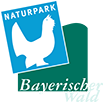An underwater world
Fish, amphibians and aquatic plants
“A lake which has an inexhaustible supply of trout” was how cartographer Philipp Apian described the Großer Arbersee as early as around 1550.
But fish have not always thrived in the Großer Arbersee. Acid deposition in the 1970s increased the water acidity to pH values of around 4.6–5.1. Fish were not able to survive in this environment. Today, conditions are much better, and the lake is now home to many brook trout, which were introduced to Europe in 1884.
The water in the Arbersee was not always as clear as it is today. In the past, the bottom of the lake was barely visible, even from the shoreline. The clearer water is also a result of acid deposition and precipitation of dark-brown clouding humic substances by heavy metals. The humic substances which leach from pine needles naturally tint all the waters in the Bavarian Forest a dark brown colour.
Familiar and unknown
Some other species occurring in the Großer Arbersee are hidden away here. Do you know what they are and what their special features are?
Yellow Waterlily
I have large, round floating and underwater leaves. In summer, I produce beautiful yellow flowers. Even though I grow in the Großer Arbersee, my name is not Lake Lily. Do you know what I am?
Lesser Bladderwort
I catch small aquatic creatures with my bladder-like traps, but I am still a plant. My scientific name is Utricularia minor. Yes, I am really small and inconspicuous, but very rarely found in the Bavarian Forest.
European otter
Because I have between 50,000 and 80,000 hairs per square centimetre, I don’t feel the cold in the frigid water of the Arbersee. My agile, streamlined body means I am unstoppable in the water when I hunt fish. Do you know what I am?
Grass frog
In spring, I sometimes come out of the damp forest in the hundreds. Even though the Großer Arbersee is still mostly frozen, I spawn and croak a lot. I first emerge as a tadpole and then transform into a tiny froglet. OK, who am I?
A guest from North America!
Here on the Geigenbach, brook trout swim to the gravel banks to spawn. When you cross the Geigenbach, watch carefully what is happening below the water’s surface. From the bridge, can you see a fish with a red-orange belly? What is its name?
